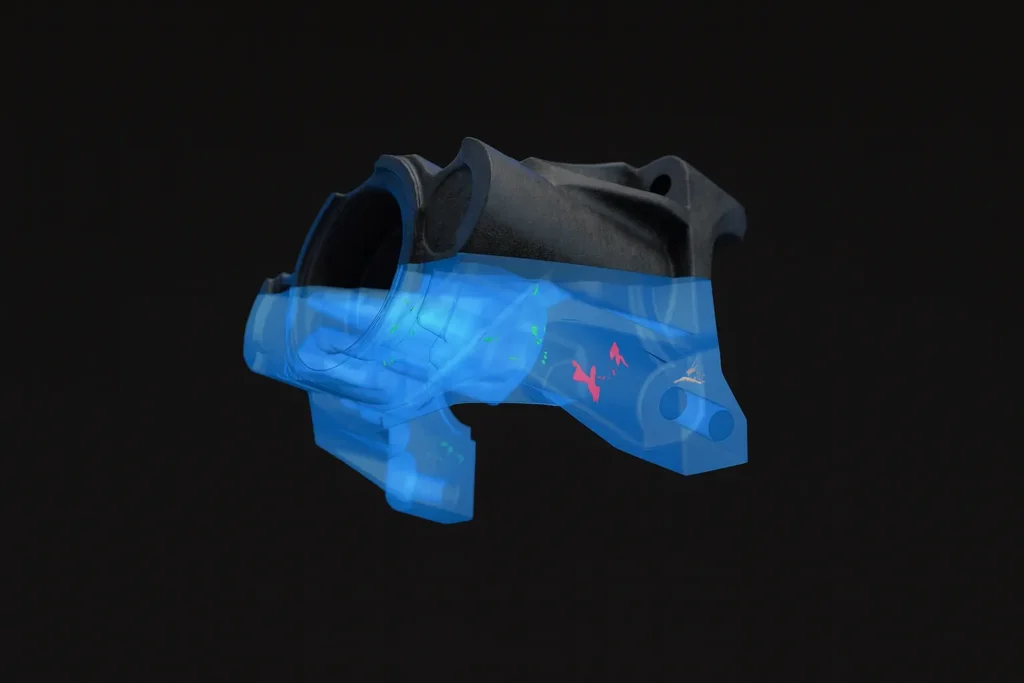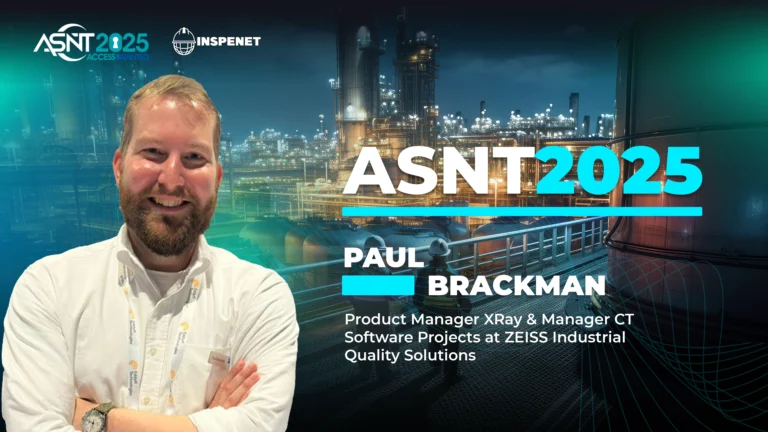ZEISS presents the ZADD module for automated inspection with AI
At the ASNT 2025 event, Paul Brackman, X-ray Product Manager and TC Software Projects Manager at ZEISS Industrial Quality Solutions, presented the advances integrated into the new version of ZEISS Inspect software. The focus of the conversation was the ZADD module, an AI-based tool that is transforming internal inspection processes in sectors such as automotive, aerospace, and medical devices.
The ZADD module: defect detection with integrated AI
ZADD, which stands for ZEISS Automated Defect Detection, is an advanced feature that operates within the ZEISS Inspect ecosystem. Designed to identify porosities and internal inclusions in industrial components, this module completely automates tomographic inspection. Its artificial intelligence engine delivers repeatable and reliable results without the need for manual adjustments, eliminating variability introduced by the human factor.
ZADD is designed for efficiency: it analyzes the internal volume of parts and delivers diagnostics on structural defects in seconds. This allows manufacturers to act quickly, reduce rejection rates, and ensure high quality standards, especially for high-precision components.
Customization through Python scripting
One of the advantages most valued by advanced users of ZEISS Inspect is the ability to integrate Python scripts. This customization capability facilitates large-scale process automation. Paul Brackman noted that teams operating nationally or globally can create programs that inspect hundreds of parts with a single template, speeding up production cycles and improving data traceability.
The ecosystem also allows databases to be interconnected with the software using Python, expanding the scope of industrial digitization and adapting to advanced manufacturing environments.
Better results for multi-material parts
Inspecting components made of different materials poses a considerable challenge in X-ray metrology. Different levels of absorption affect image quality, making it difficult to accurately segment internal elements.
To address this limitation, version 2025 of ZEISS Inspect incorporates a feature called two-material beam hardening correction. This enhancement allows for post-acquisition image correction, optimizing the visualization of both low- and high-density materials. As a result, the system generates more accurate meshes and achieves more defined segmentation of internal structures.

Parametric inspection: error-free traceability
Another notable feature of ZEISS Inspect is its fully parametric structure; this means that once an inspection program has been configured, the user can import new volumes and the software automatically recalculates all parameters without the need for manual intervention.
This automation eliminates inconsistencies in results caused by human actions, such as errors when clicking on reference points. In environments where high repeatability is required, such as in R&R (Repeatability and Reproducibility) studies, this functionality represents a significant advantage in maintaining data consistency.
A solution aligned with the precision industry
With these innovations, ZEISS Industrial Quality Solutions reflects its commitment to quality and efficiency in advanced manufacturing. The ZADD module, as the centerpiece of the 2025 version of the software, is integrated as an important solution for automated inspections, especially for critical components in sectors such as automotive and aerospace.
For more content on ASNT 2025, visit our LinkedIn profile.
Source: Inspenet.


